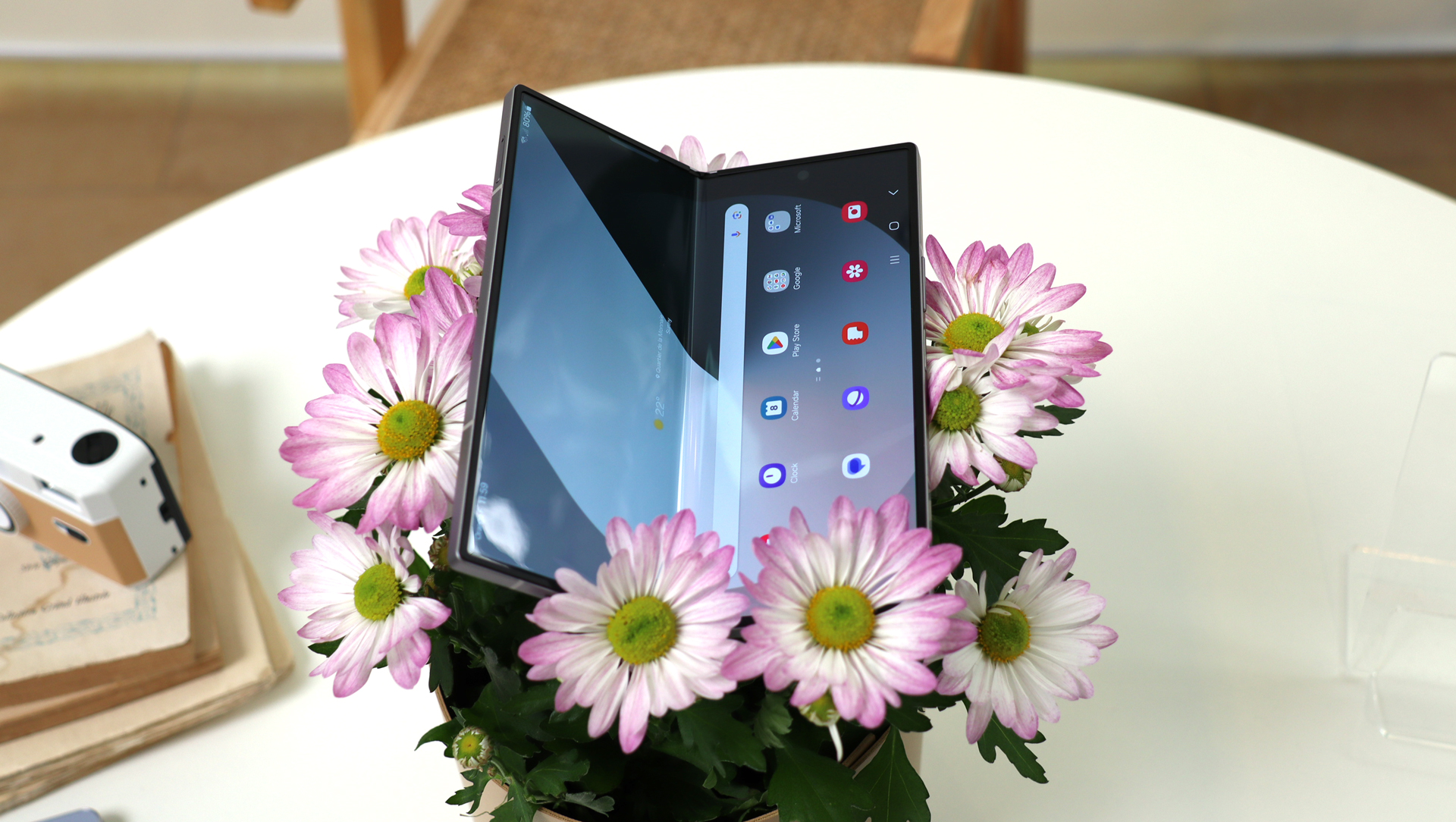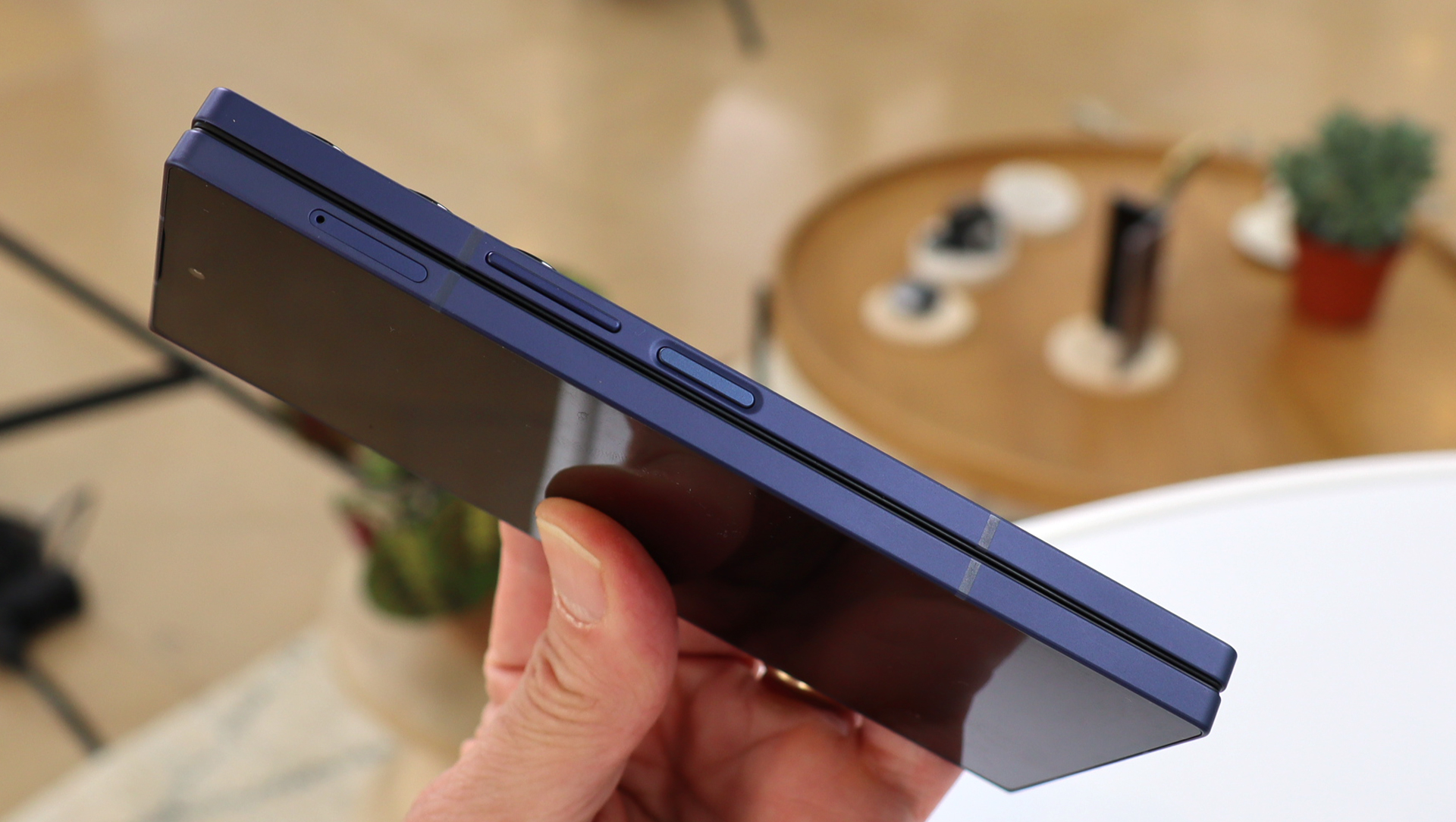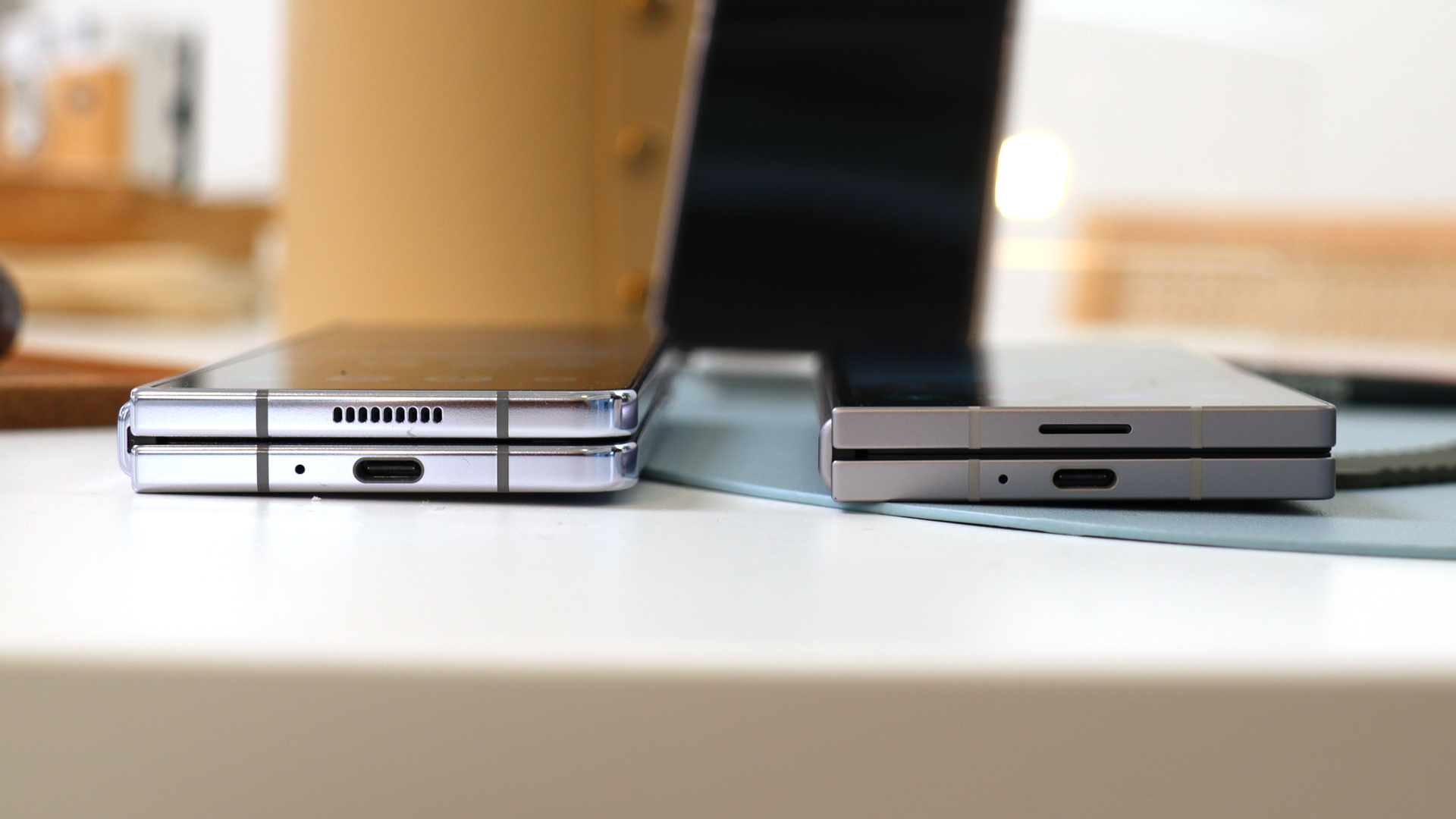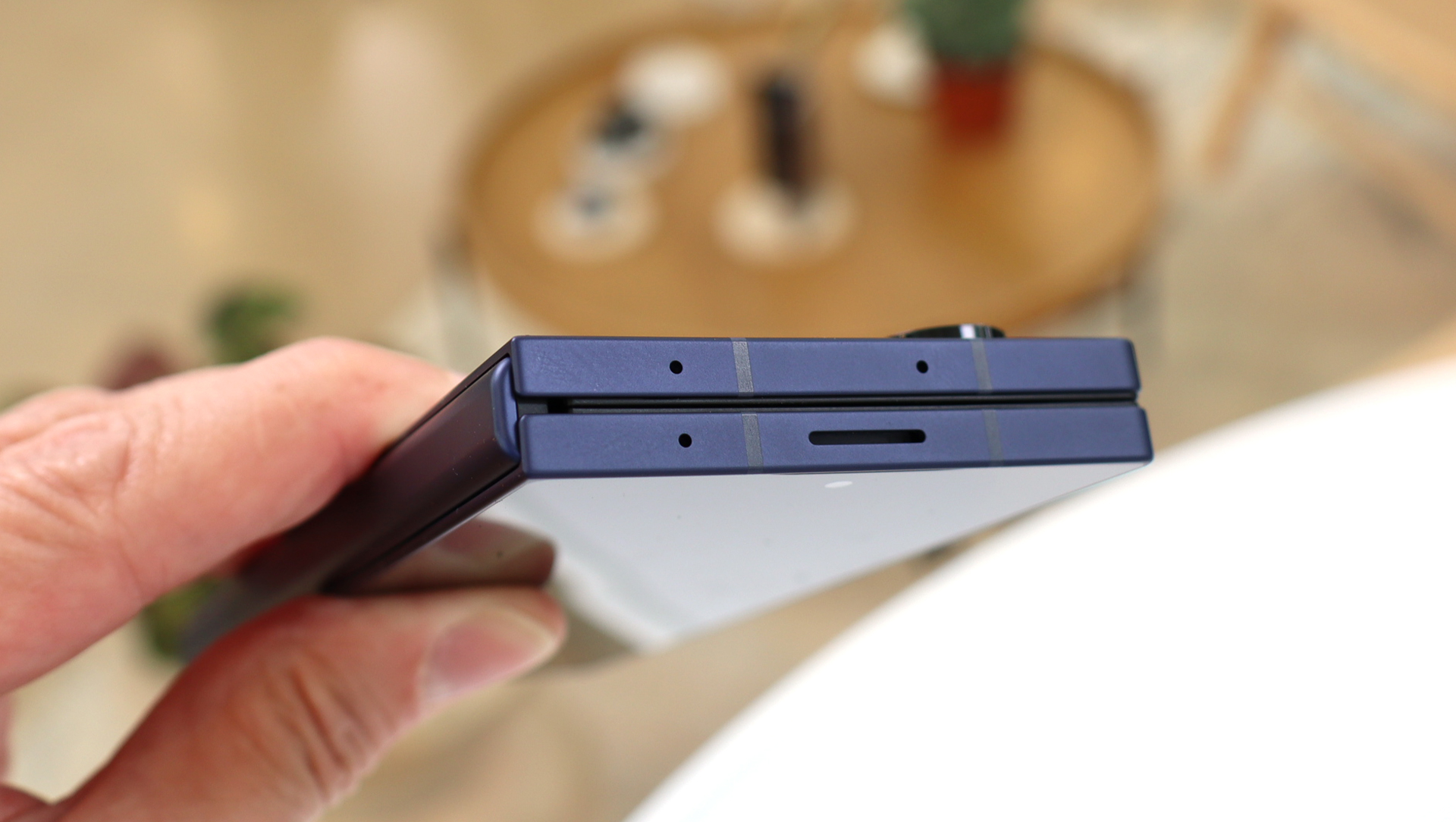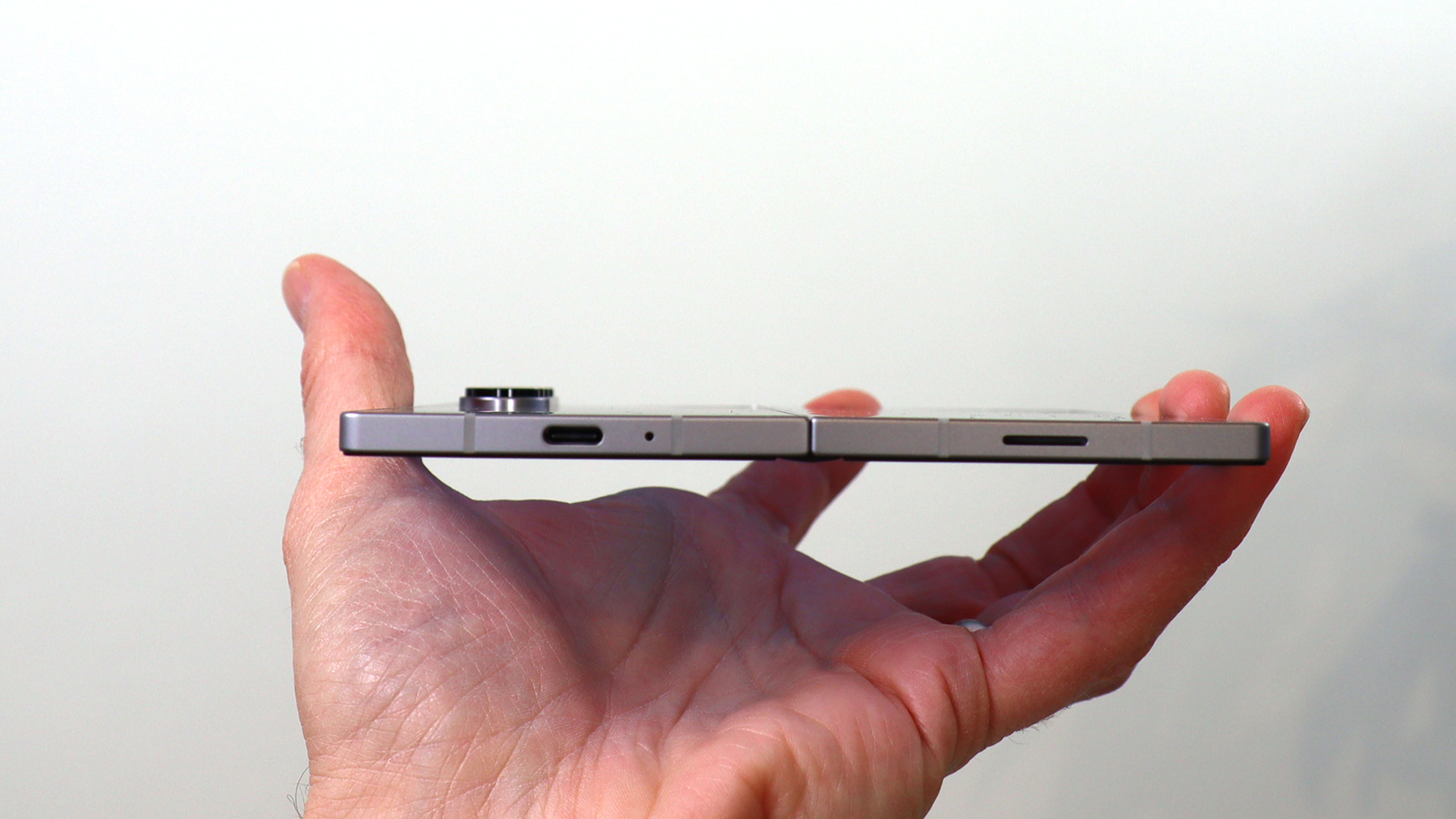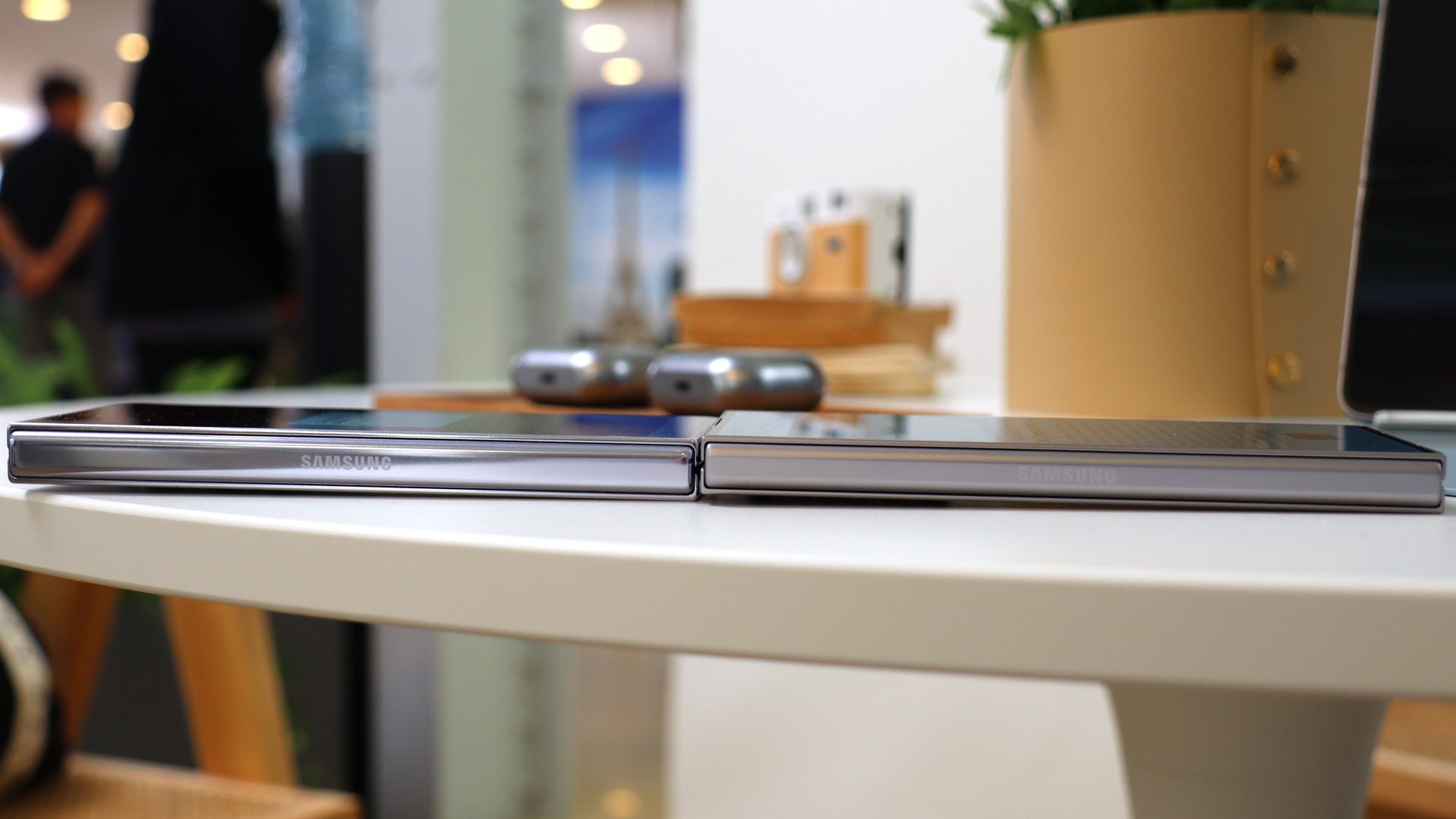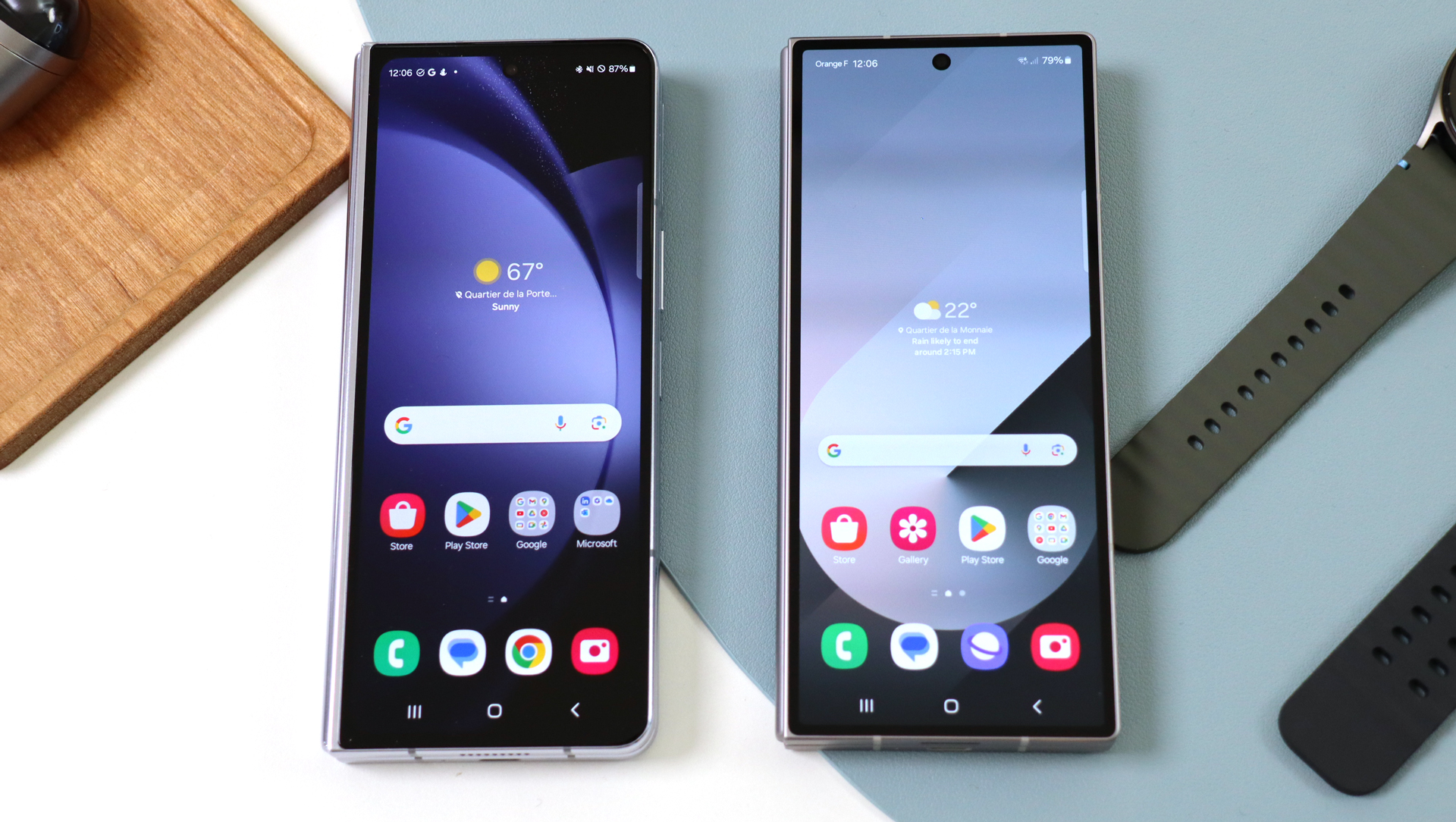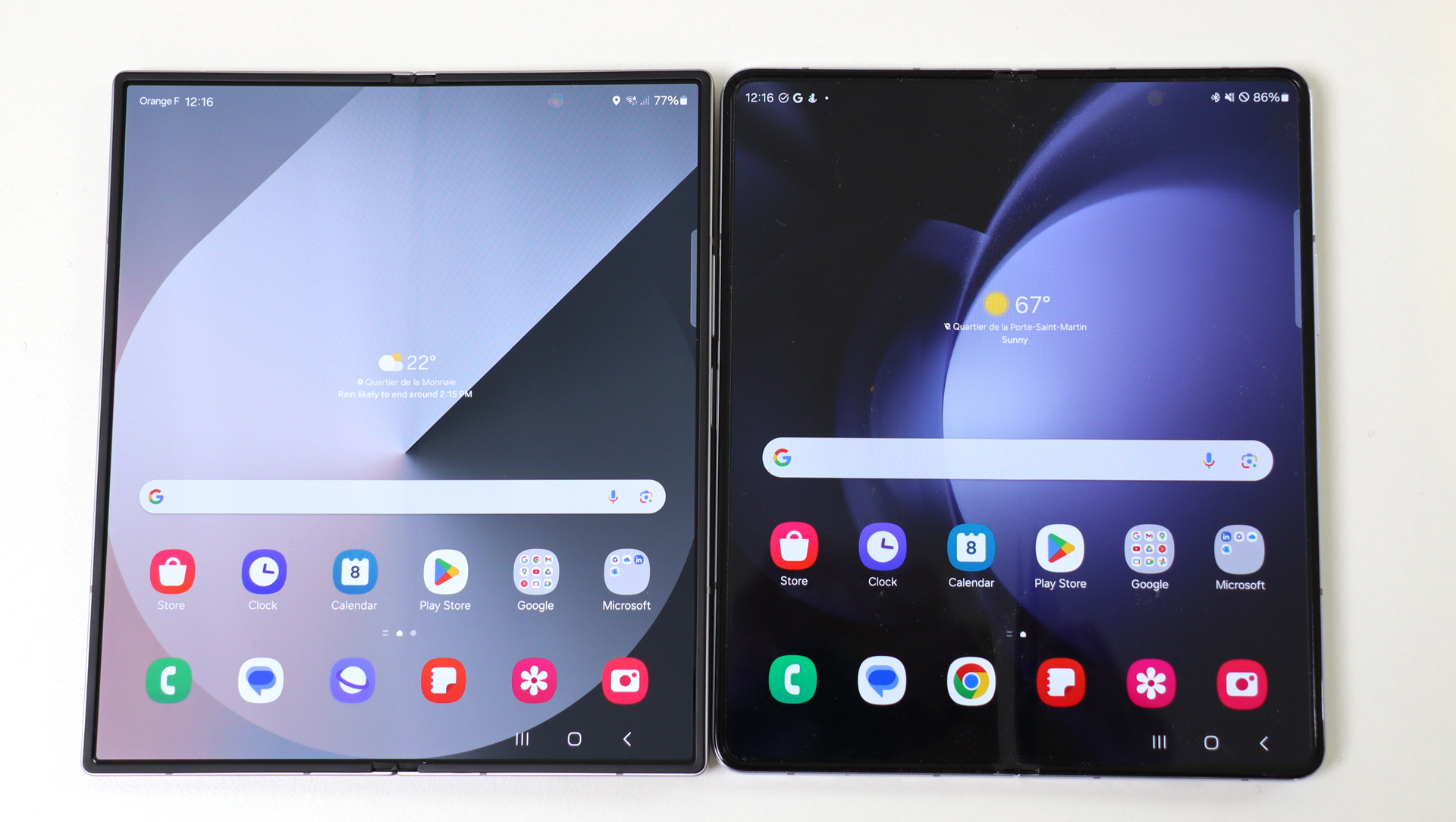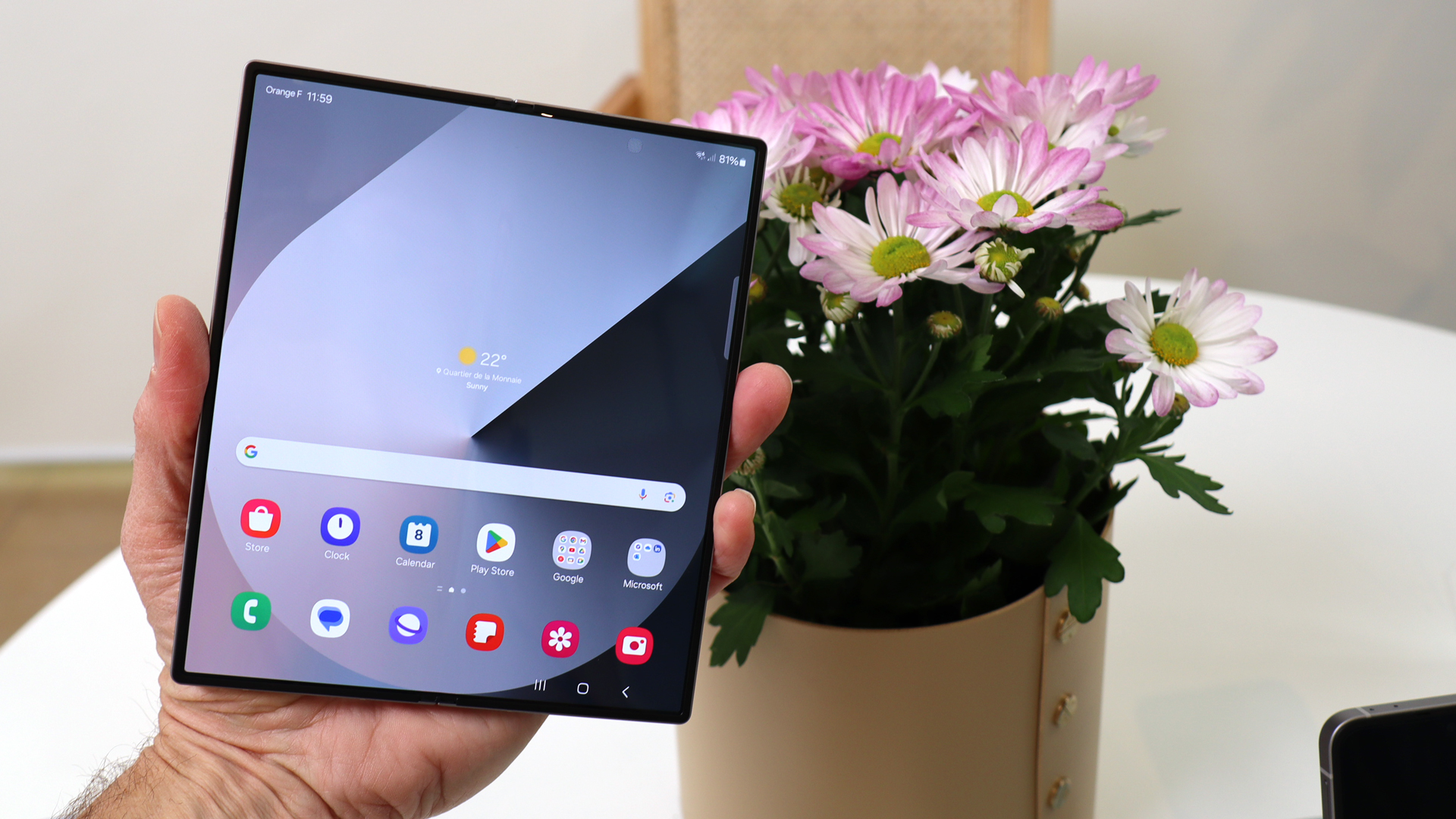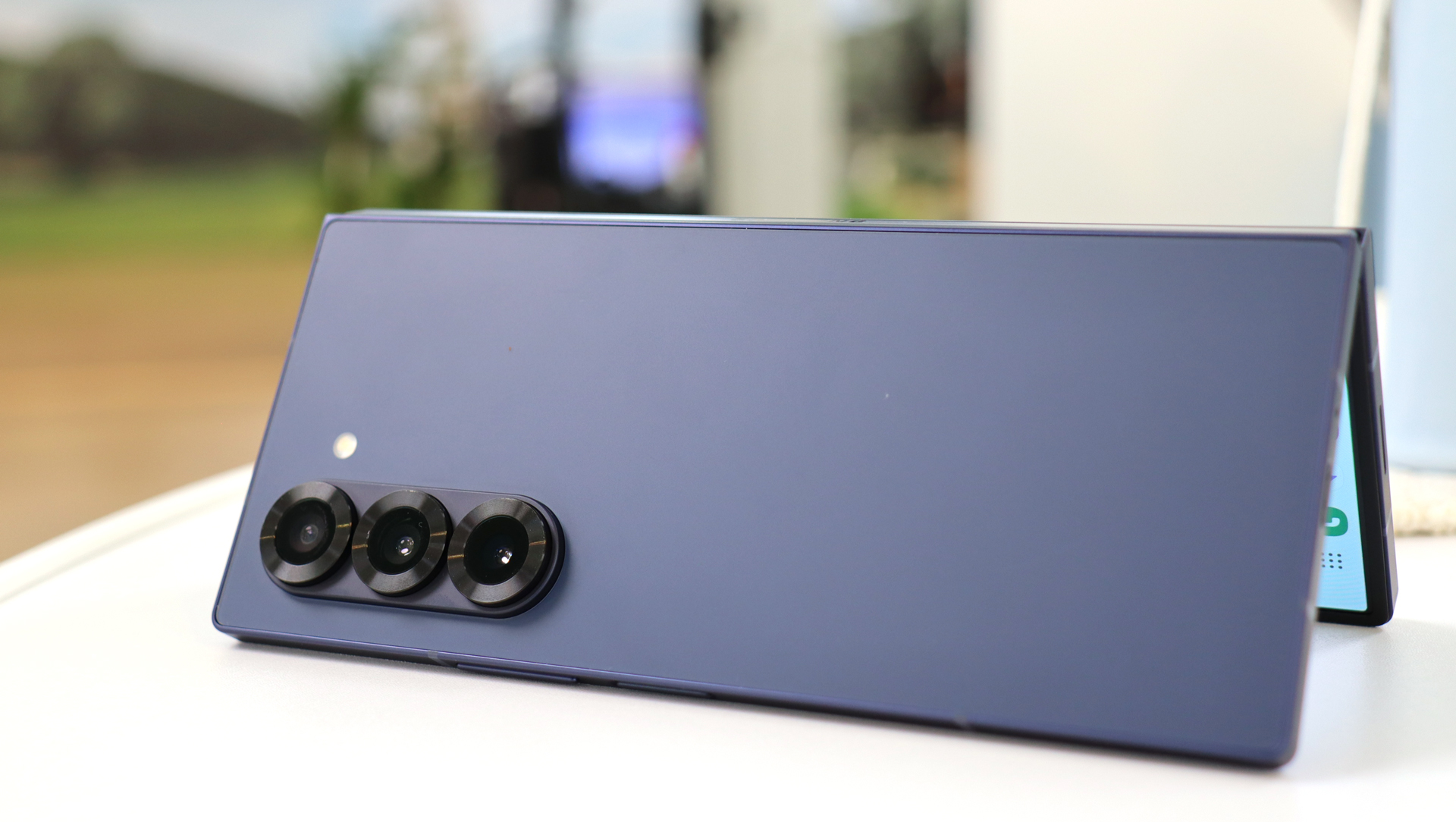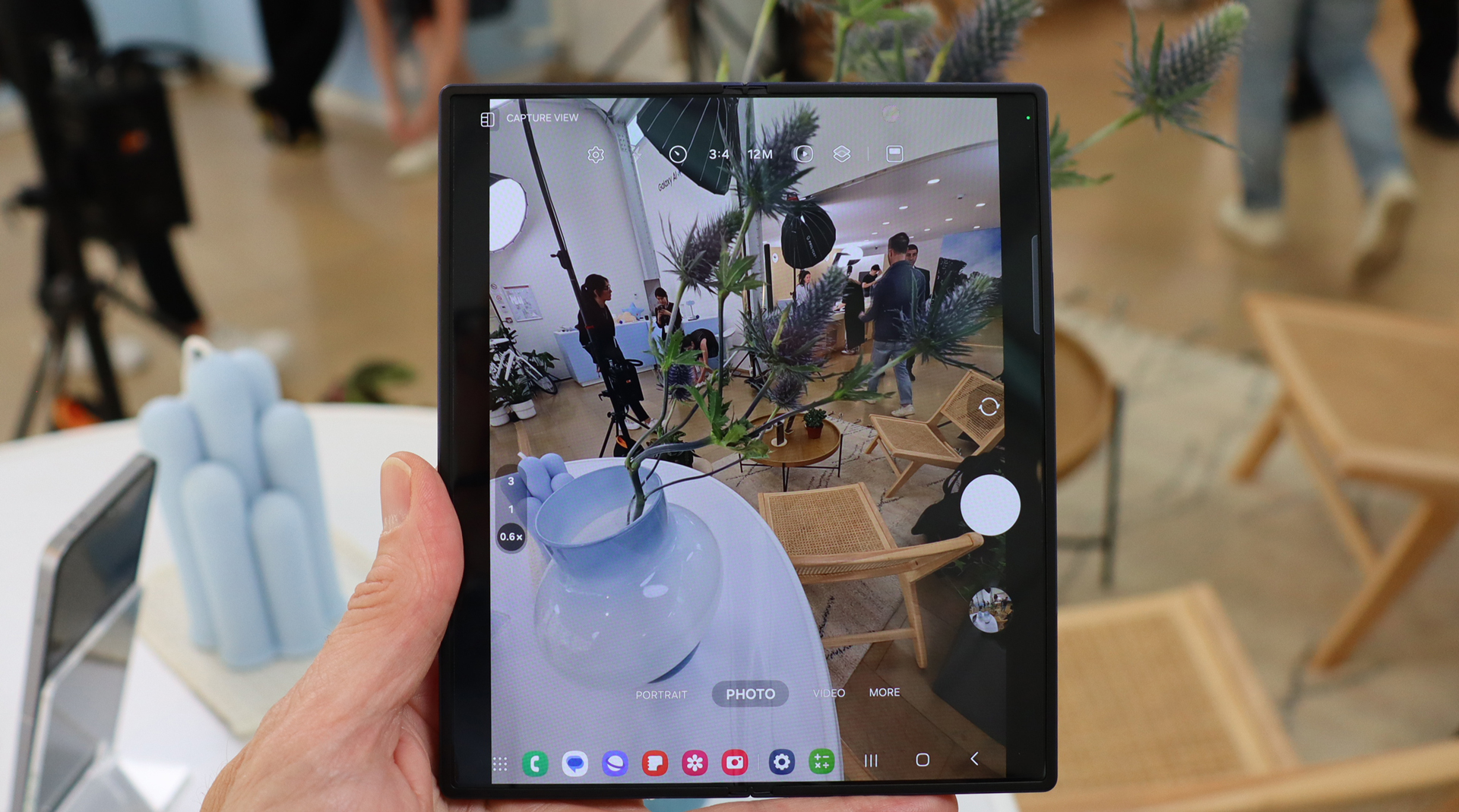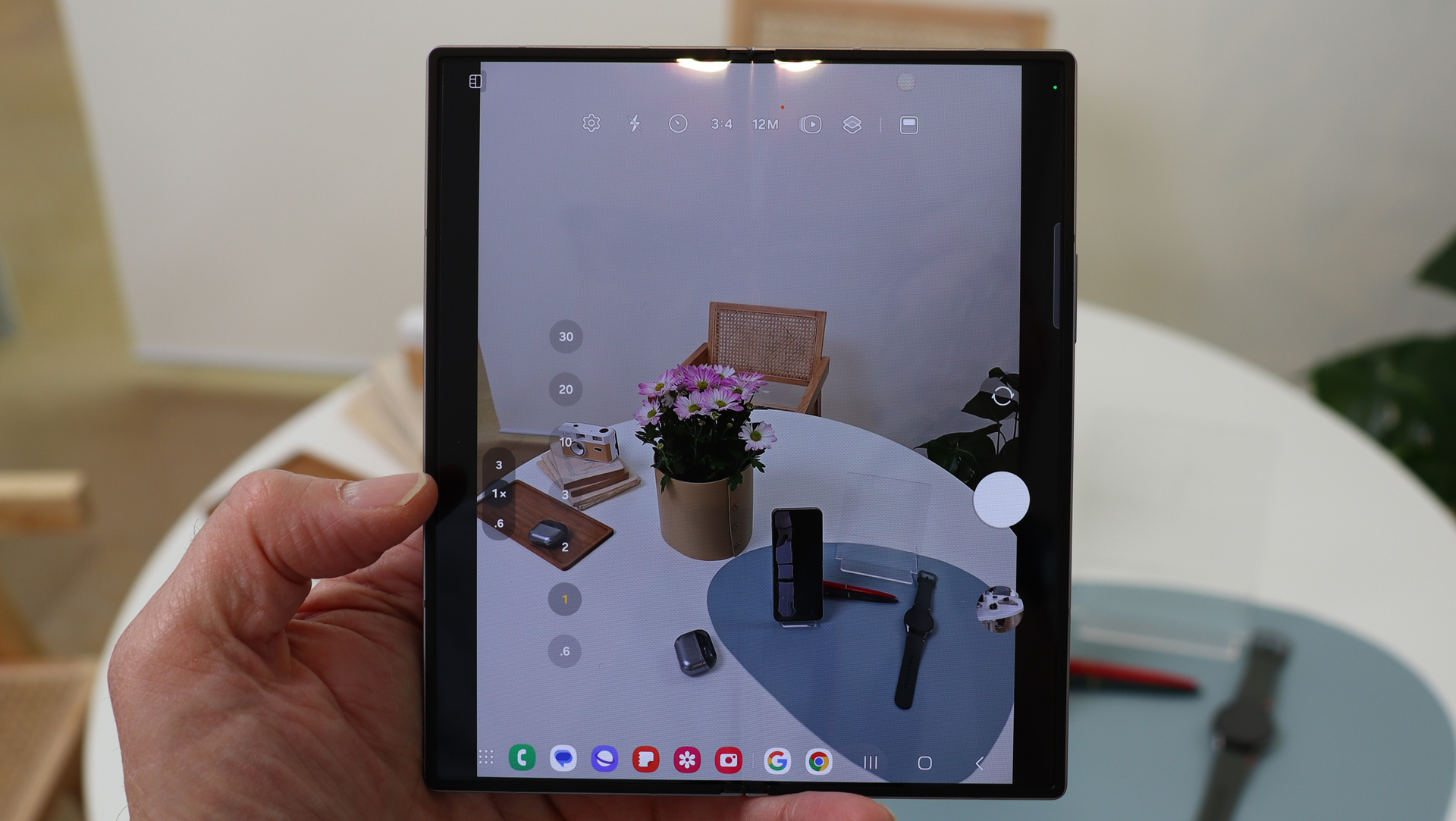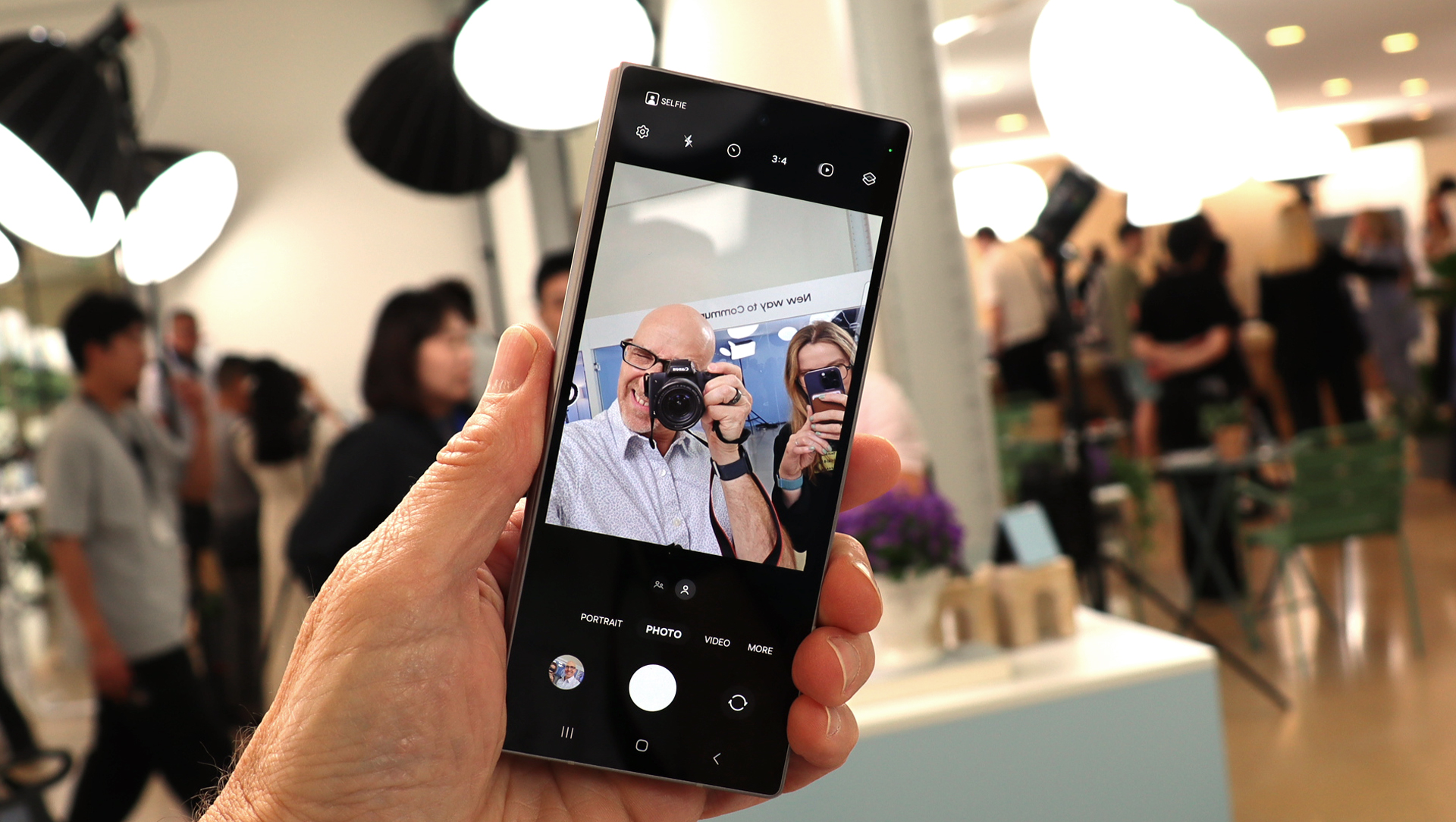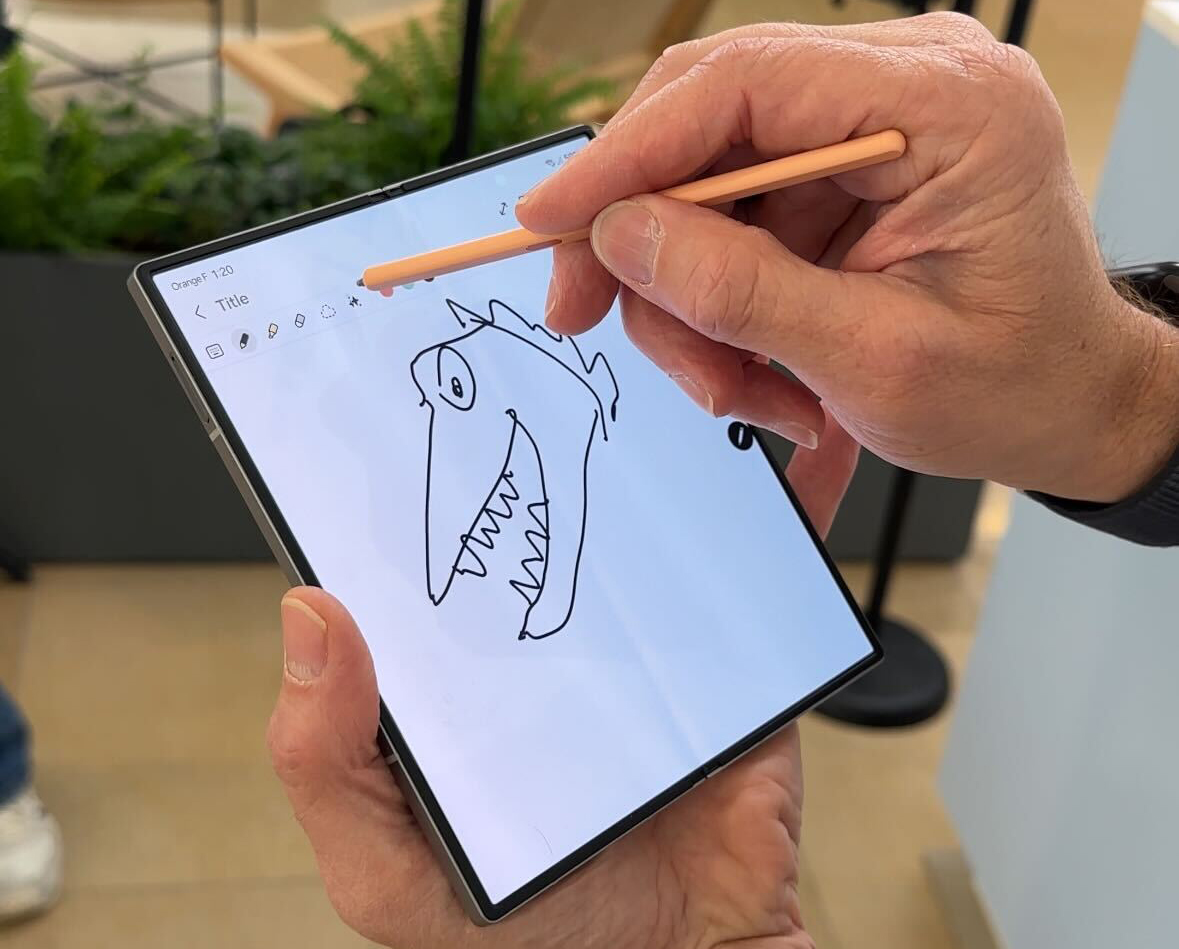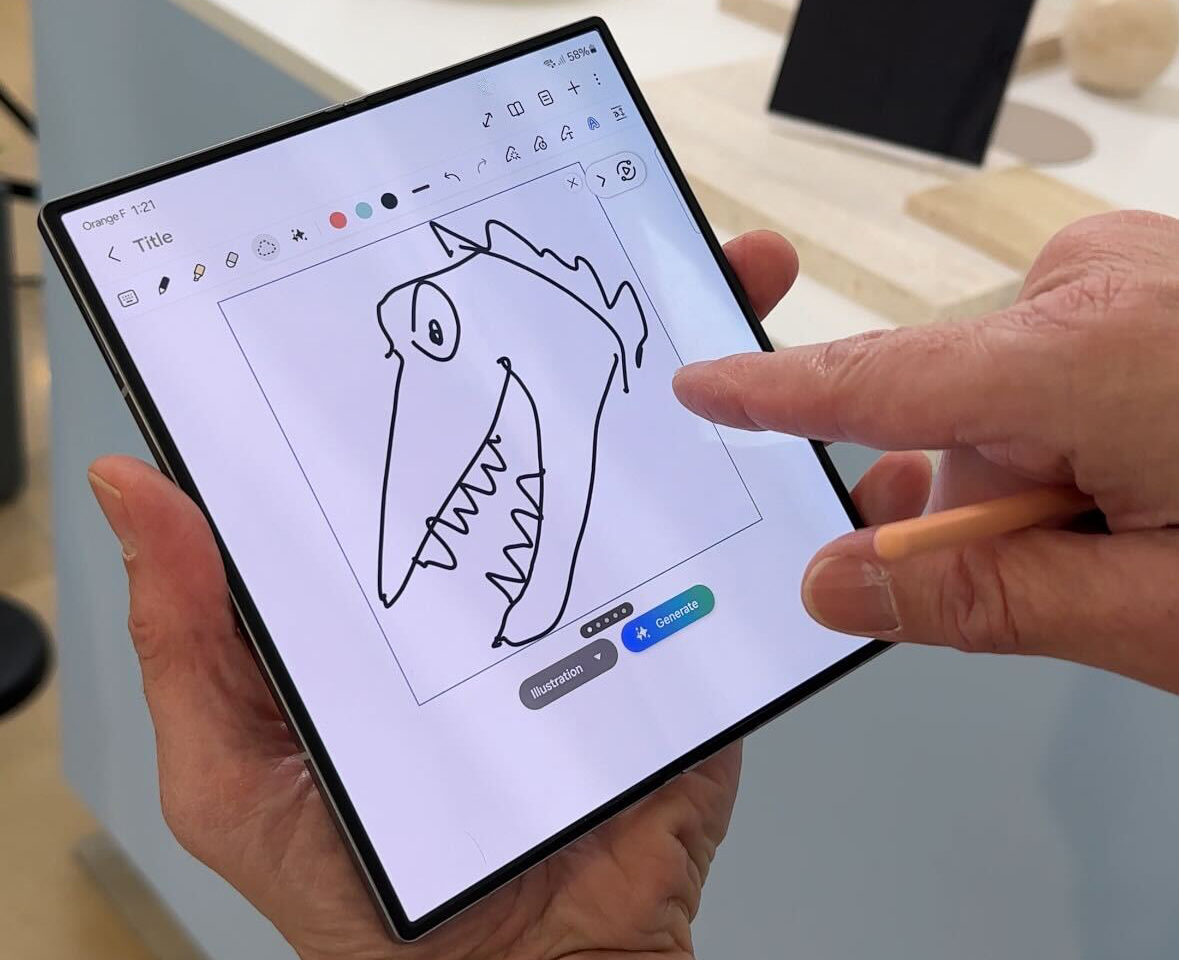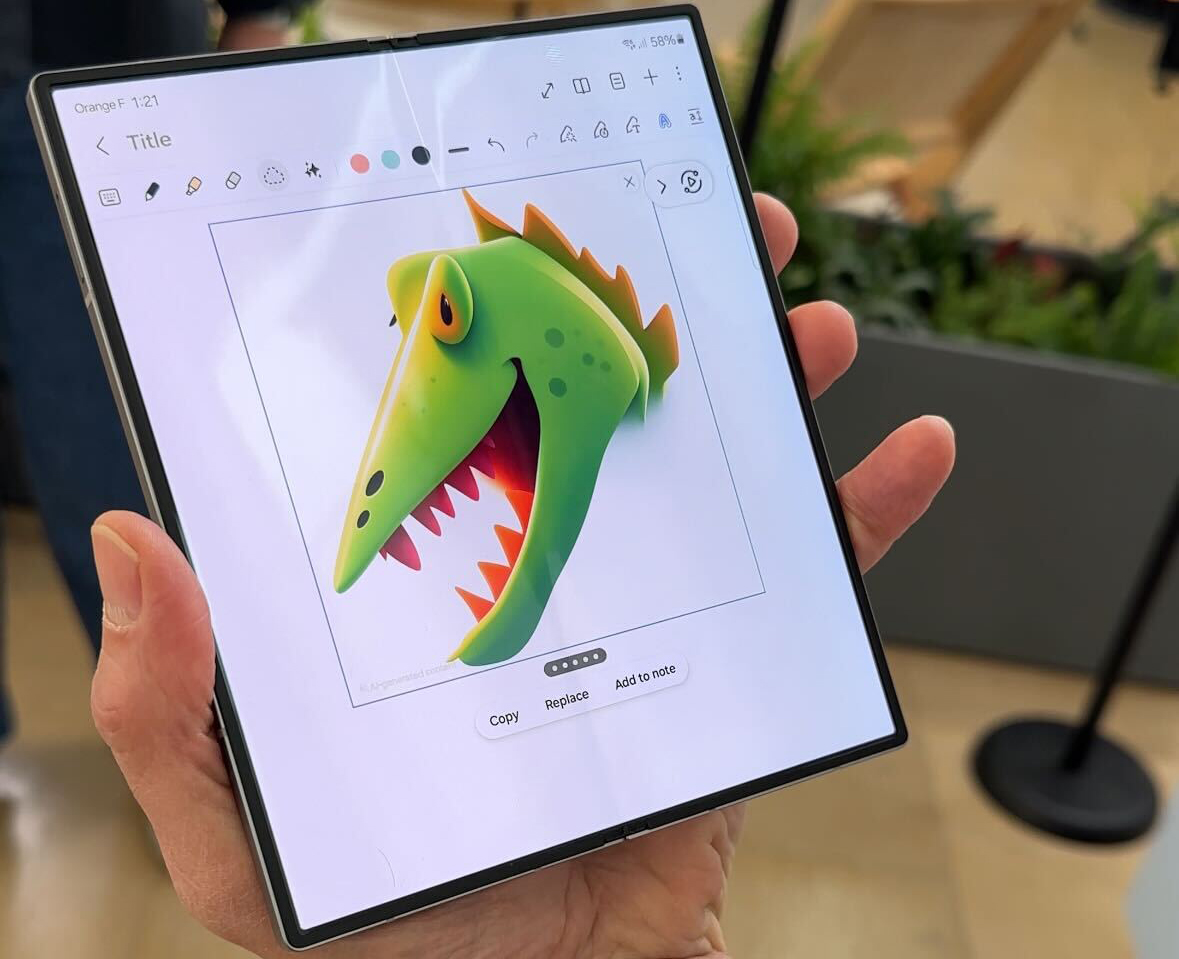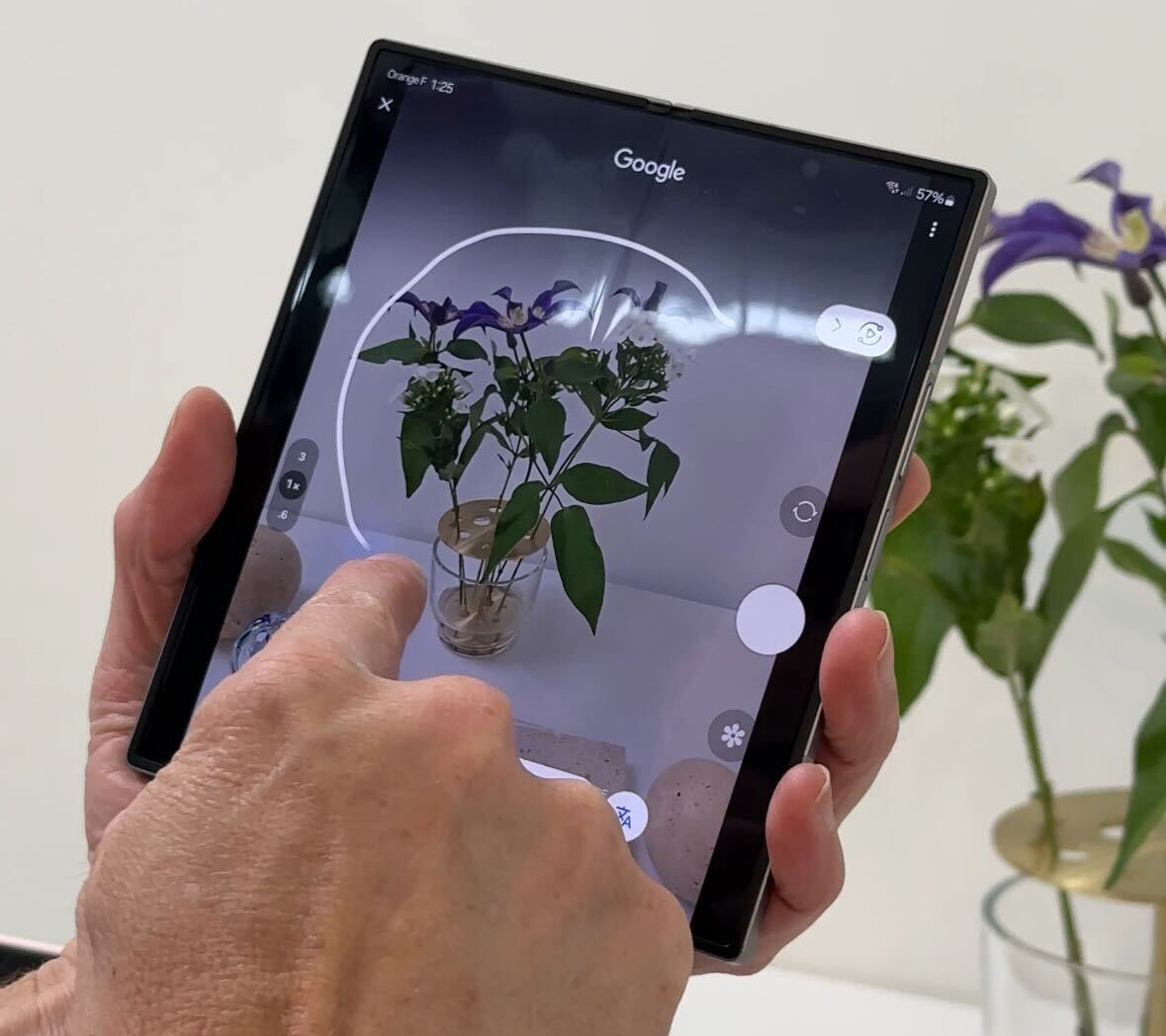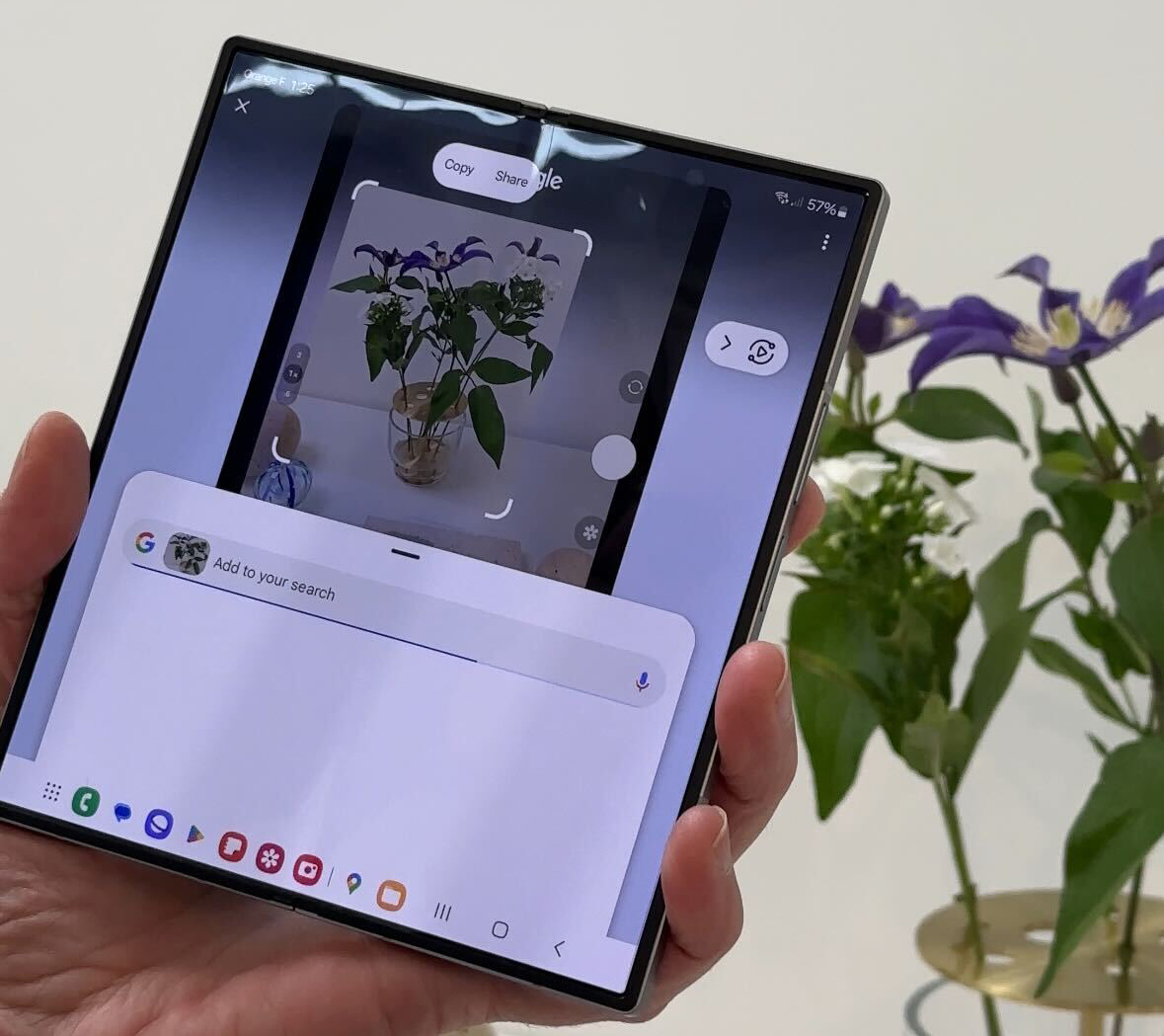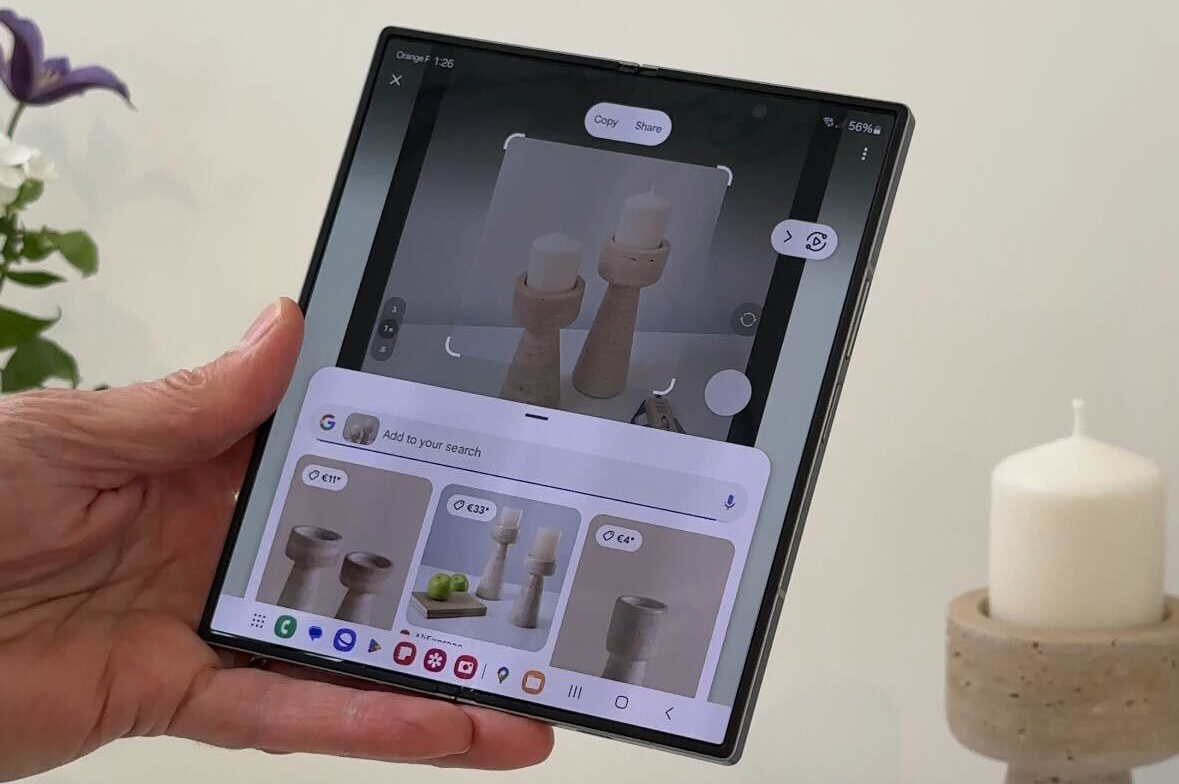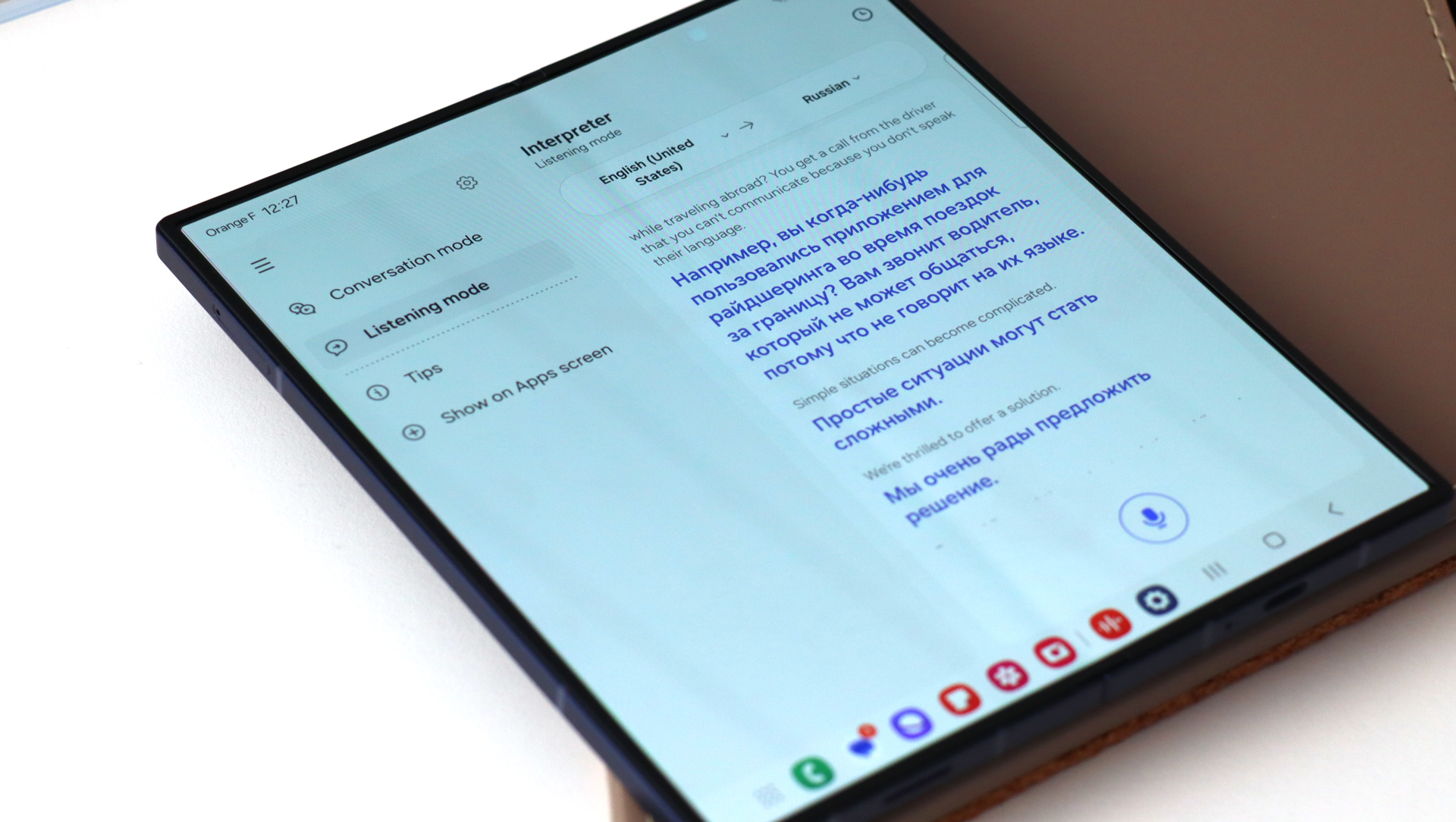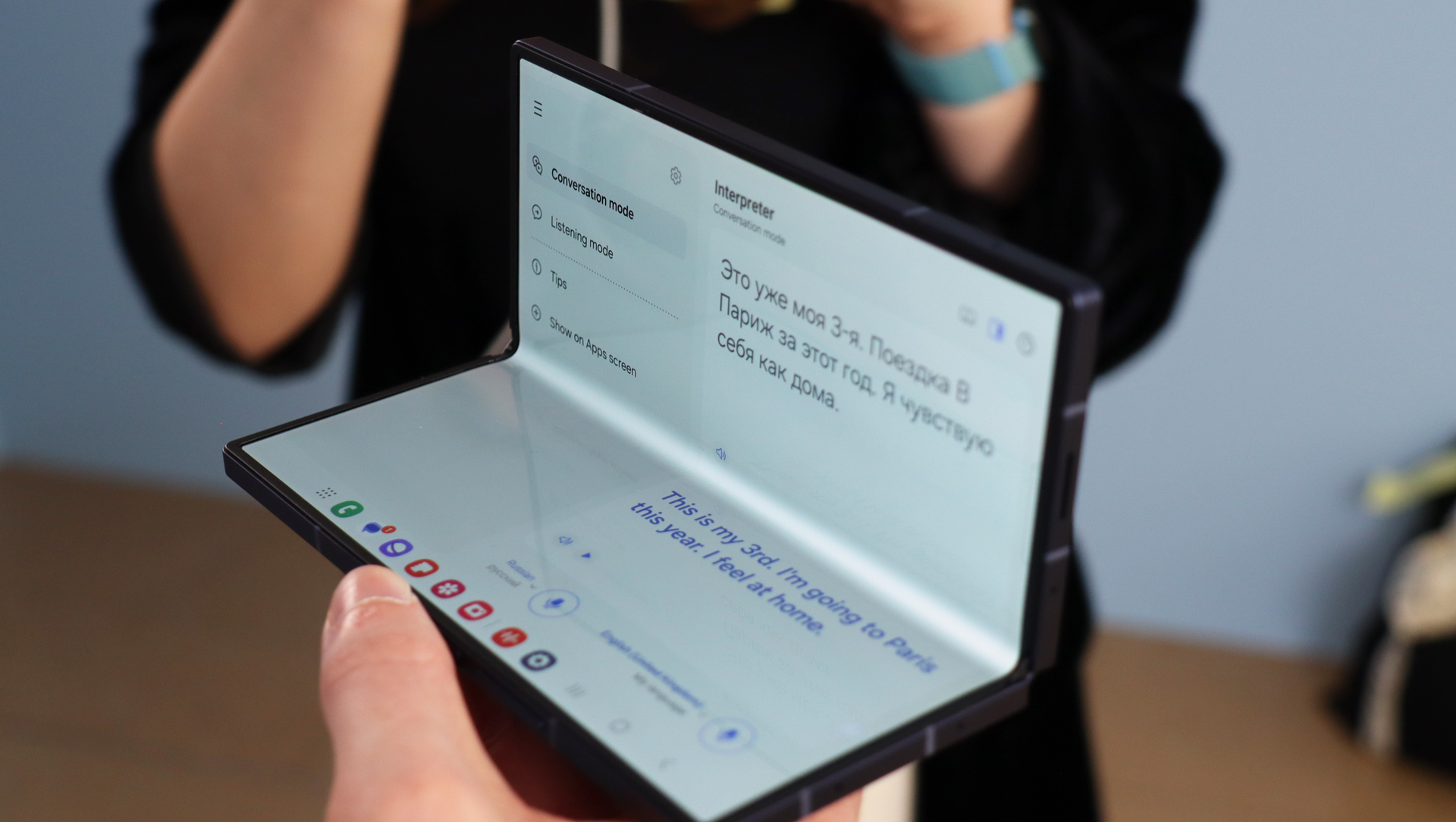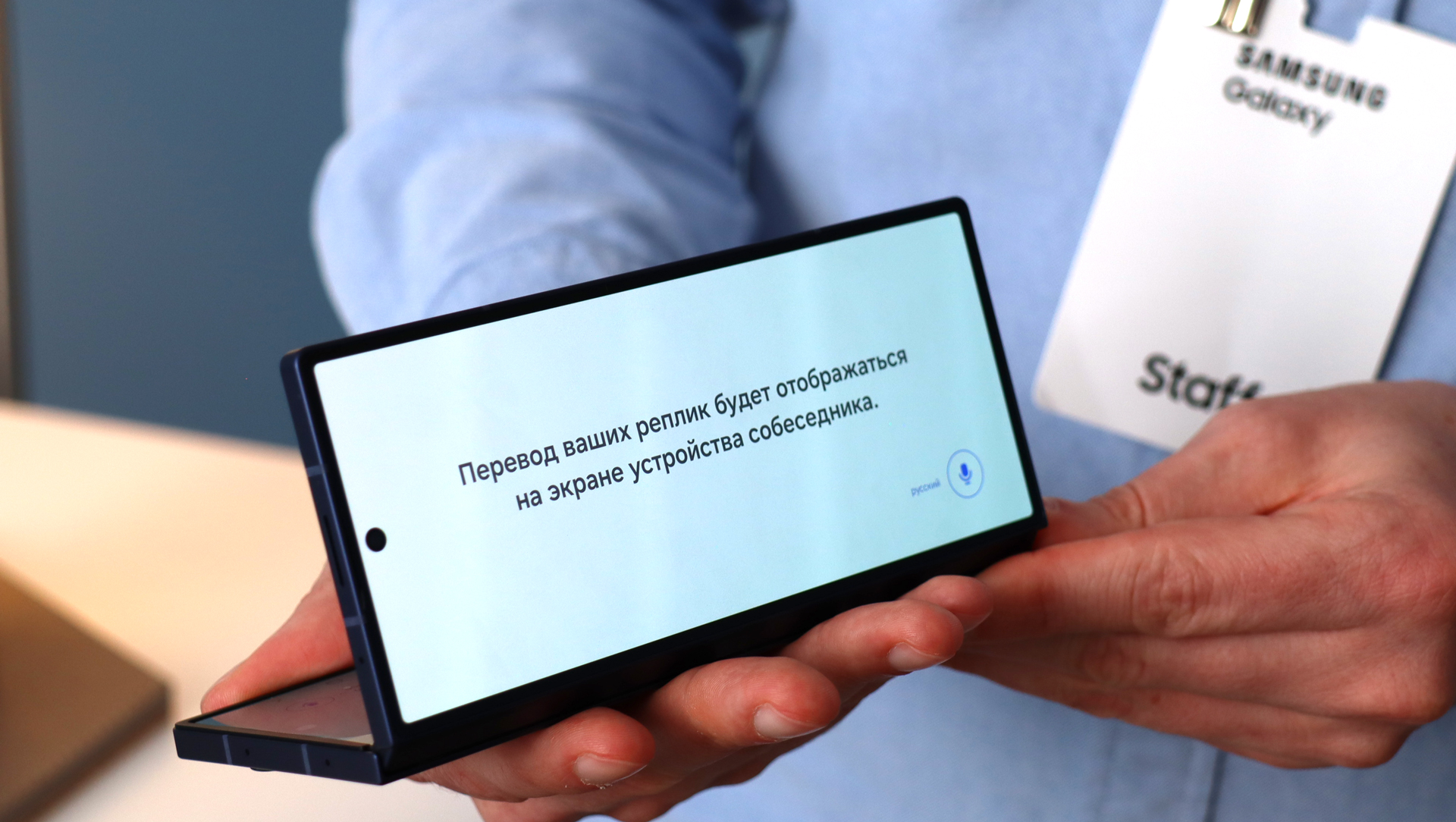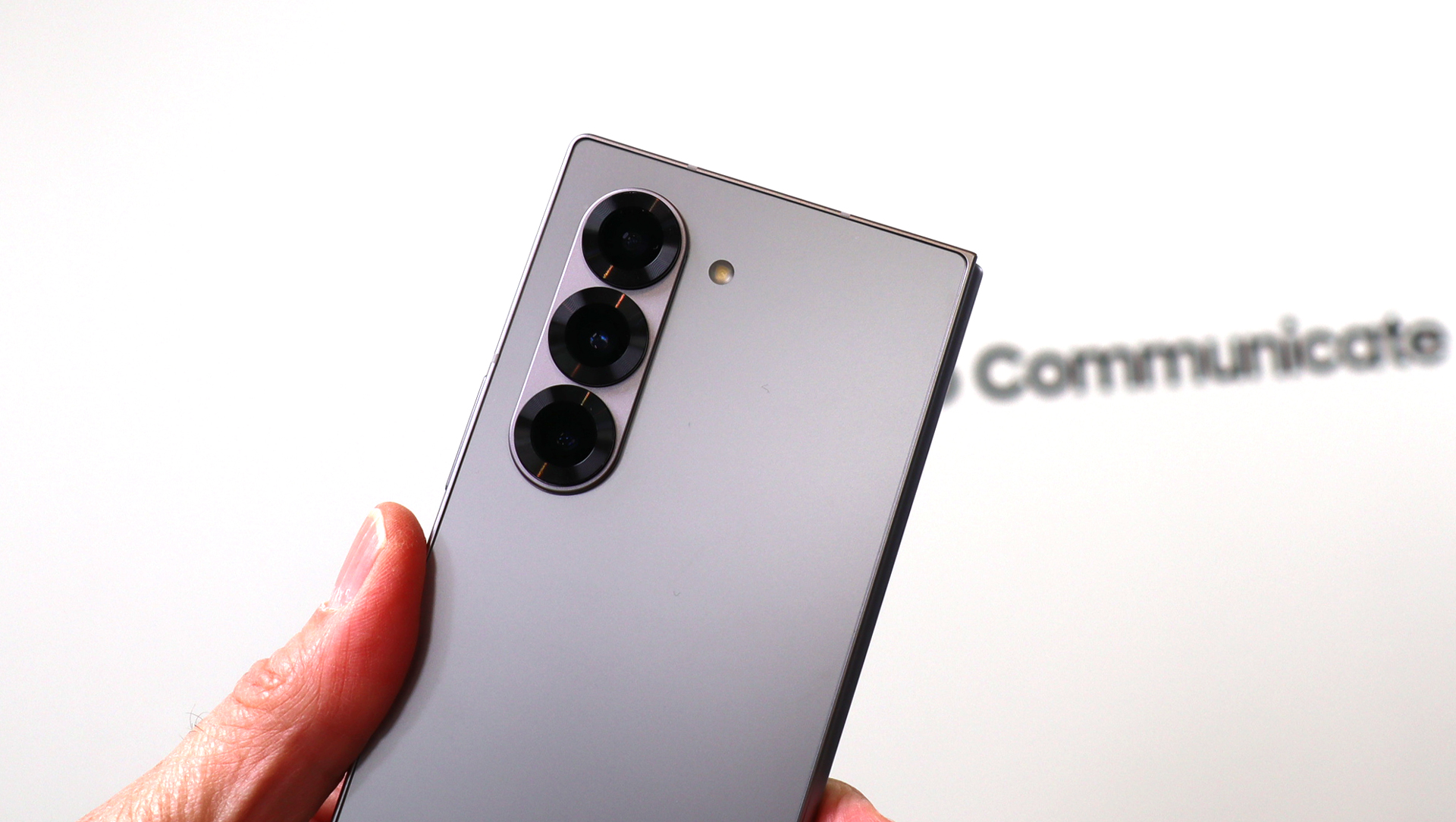Samsung Galaxy Z Fold 6: One-minute hands-on
Bit by bit Samsung’s foldables have become practical, powerful, and elegant devices that you might reasonably choose over a flagship that doesn’t bend in the middle. The new Samsung Galaxy Z Fold 6 is no exception, and it’s a testament to how far Samsung has come since introducing its first foldable Galaxy in 2019. The Galaxy Z Fold 6 bears almost no resemblance to the original Fold, and the changes are all for the good, in the areas that matter.
Samsung unveiled the Galaxy Z Fold 6 at Samsung Galaxy Unpacked in Paris on July 10 alongside the new but perhaps less-altered Galaxy Z Flip 6 and a host of other new Galaxy hardware, including watches, earbuds, and the eagerly-anticipated Galaxy Ring.
Samsung Galaxy Z Fold 6 hands-on: price and specs
The Galaxy Z Fold 6 starts at $1,899.99 / £1,799 / AU$2,749, which is $100 more than the previous model. That model comes with 256GB of storage and an ample 12GB of RAM. I’ll have more to say on the price hike later. It’s on preorder as of today, July 10, and will ship on July 27. There are multiple color options, including Pink, and a few online exclusives including white and Crafted Black, though I think the Navy Blue may be my favorite.
| Samsung Galaxy Z Fold 6 | Google Pixel Fold | Oppo Find N2 Flip specs | |
|---|---|---|---|
| Dimensions (folded): | 68.1 x 153.5 x 12.1mm | 139.7 x 79.5 x 12.1mm | 85.5 x 75.2 x 16.02mm |
| Dimensions (unfolded): | 132.6 x 153.5 x 5.6mm | 139.7 x 158.7 x 5.8mm | 166.2 x 75.2 x 7.45mm |
| Weight: | 239g | 283g | 191g |
| Main display: | 7.6-inch QXGA+ Dynamic AMOLED 2XInfinity Flex Display (2160 x 1856, 20.9:18), 374ppi120Hz adaptive refresh rate (1~120Hz) | 7.6 inch (2208 x 1840) OLED | 6.8-inch 21:9 (2520 x 1080) 120Hz LTPO E6 AMOLED, protected by UTG |
| Cover display:: | 6.3-inch HD+ Dynamic AMOLED 2X Display(2376 x 968, 22.1:9), 410ppi120Hz adaptive refresh rate (1~120Hz) | 5.8 inches (2092 x 1080) OLED | 3.26-inch 17:9 (720 x 382) 60Hz AMOLED, protected by Gorilla Glass 5 |
| Chipset: | Qualcomm Snapdragon 8 Gen 3 Mobile Platform for Galaxy | Google Tensor G2 | MediaTek Dimensity 9000 Plus |
| RAM: | 12 GB | 12GB (LPDDR 5) | 8GB (LPDDR5) |
| Storage: | 256 GB / 512GB / 1TB | 256GB / 512GB | 256GB (UFS 3.1) |
| OS: | Android 14 / OneUI 6.1.1 | Android 13 | Android 13 w/ ColorOS 13 |
| Primary camera: | 50MP, f/1.8 | 48MP, f/1.7 | 50MP, f/1.8, 23mm, 86° FoV (Sony IMX890) |
| Ultrawide camera: | 12MP, f/2.2 | 10.8MP, f/2.2 | 8MP, f/2.2, 16mm, 112° FoV (Sony IMX355) |
| Telephoto | 10MP, f/2.4 | 10.8MP f/3.05 | |
| Front Camera: | 10MP, f/2.2 | 9.5MP f/2.2 | 32MP, f/2.4, 21mm, 90° FoV (Sony IMX709) |
| Inner Camera | 4MP | 8MP f/2.0 | |
| Battery: | 4,400mAh | 4,727mAh | 4,300mAh |
| Charging: | 30 mins with 25W adapter (wired) | 30W (wired) | 44W (wired) |
| Colors: | Silver Shadow, Pink, Navy [Samsung.comExclusive] Crafted Black, White | Porcelain, Obsidian | Astral Black, Moonlit Purple |
Samsung Galaxy Z Fold 6 hands-on: design
While Samsung didn’t completely throw out the previous Fold aesthetic, it’s substantially different in the Galaxy Fold 6. The handset is thinner and lighter than the previous model; in fact it’s so light at 239 grams that it’s only seven grams heavier than the single-screened Samsung Galaxy S24 Ultra. That itself is quite a feat (granted, there may be some material differences, like Armor Aluminum on the Galaxy Z Fold 6 versus the S24 Ultra’s Titanium body), and the Galaxy Z Fold 6 feels noticeably lighter than the Z Fold 5 that I brought with me to Paris for the sake of comparison.
The chrome edging is gone, and I do not miss it at all. Even though the button placement is unchanged and the fingerprint reader (power/sleep button) is the same, all the buttons look and feel better.
Unfolded, the Fold 6 is thinner than the Fold 5, and it’s also slightly shorter and slightly wider than the last foldable flagship. In a quick comparison with the Google Pixel Fold, though, the Fold 6 maintains the height advantage. The newly squared corners and visibly thinner bezels give the tablet-sized screen a more expansive and cleaner feel.
The main screen crease is still visible, but less so than it was on the Z Fold 5. It’s impressive how year over year Samsung moves the art of this technology a little closer to perfect. The crease-free Fold is coming – someday.
Samsung told me it’s strengthened the hinge by adding more steel to the dual-rail system. That system by the way is more or less sealed, which means it doesn’t need tiny brushes inside the hinge to push out debris. Still, while the phone is rated to survive 30 minutes in a meter of water, its ability to withstand a dust storm might be a bit less certain, which is why it has an IP8X rating and not IP68.
Samsung Galaxy Z Fold 6 hands-on: display
Both the main and the cover screens look bigger and better than ever. The cover screen benefits from a shrinking bezel that adds a tiny bit of screen real estate without making the phone much wider. The inside display, which is still AMOLED, does get some important updates. It’s now, at 2,600 nits, much brighter than the one on the Z Fold 5 (1,700 nits), and includes adaptive refresh up to 120Hz. There are also more software controls, including vibrancy (adopted from the S24 line).
However, the most notable folding screen update may be one you can’t see (though you might say you can feel it). Samsung execs told me they added a new layer made of neodymium to the folding screen panel. The material has Newtonian qualities, which means it can act like cornstarch and water, which when mixed are soft if you’re pressing gently, but harden when you hit it harder. It’s designed to be pliable, but if you were to hit the Fold 6 screen with a hard object, the layer would automatically meet it with stiff resistance. Naturally, we won’t know the effectiveness of all this until I test the foldable fully.
Samsung Galaxy Z Fold 6: cameras
Samsung redesigned the camera housing to make it look, I believe, a bit more ‘pro’ and in line with the phone’s more elegant overall appearance. However, it’s in this area where I worry Samsung didn’t go far enough.
It has retained last year’s 50MP main wide and 10MP 3x optical zoom cameras, and only upgraded the 12MP ultrawide, adding a sensor that’s better equipped to handle low-light situations (it’s adopted from the S24, and it can also help with focusing speed). Any other photographic improvements are due to upgrades in Samsung’s ProVision software.
In my limited hands-on time, I could see that the cameras work as well as what I experienced using the Galaxy Z Fold 5. The 3x zoom is useful, and you can go all the way up to a 30x space zoom, though I wouldn’t recommend it, mainly because space zoom relies a little too much AI image enhancement for my tastes.
What I was hoping for here was the adoption of the flagship-class S24 Ultra cameras. That handset’s 200MP main camera and better 5x optical zoom are the least we should expect from a smartphone costing nearly $2,000 (even one with two displays). That said there’s nothing wrong with this camera array, and it should please most casual photographers. The cover screen features a cutout 10MP selfie camera that I tried and liked, and there’s also a 4MP main display camera (usually hidden by pixels) that you’ll mainly use for video calls.
I shot some test images both with the Z Fold 6 unfolded, in which orientation the main screen becomes a giant viewfinder, and with the handset closed, using the smaller cover screen as my viewfinder. The nice thing about using the large screen is that you can have a view that shows both the live camera feed, and a film strip of your most recent shots next to it.
Samsung Galaxy Z Fold 6 hands-on: Galaxy AI
Like most recent Galaxy phones, the Samsung Galaxy Z Fold 6 is bursting with Galaxy AI. It’s evident in, among other things, photography, image and video editing, and cross-language conversation.
One of my favorite integrations is in Notes, where I used the new Sketch to Image feature to turn rough doodles into fully-fledged pieces of art.
I drew a terrible crocodile, and it was transformed into a magazine-worthy illustration. The process is simple: you sketch in the app using either the Galaxy Fold 6-specific S Pen or your finger. You then select the image, and ask Galaxy AI to generate a more polished image based on it. It’s a cloud-based operation, so it takes 20 or so seconds, and most of the time I got not just one great illustration but a few to choose from. It’s the kind of technology that makes me worry for human illustrators.
If it’s any solace to those illustrators, the tool wasn’t foolproof. It didn’t appear to like when I put too much detail in my sketches, but I could usually overcome this by marqueeing only part of my original sketch.
The same tool can also be used to add additional design flourishes to original images. In this case, you can poorly sketch something on top of a photo – say you want to make an image of your dog wearing glasses, you can sketch the glasses and Sketch to Image will make a realistic pair of spectacles for the dog.
The Fold 6 has also adopted Galaxy AI features that first appeared with the Samsung Galaxy S24. For example, I shot a short video with the Galaxy Fold 6 of our social editor Viktoria Shilets tossing her hair at normal speed. During playback on the phone, I held my finger on the screen and it automatically turned that portion of the video into a commercial-worthy slow-motion. It’s a fun little feature, and one that works even more effortlessly on the Fold 6 thanks to the slow-mo output now being downloadable right after creation – S24 users had to dig for that option.
Samsung told me that features like Generative Fill, which you can use to move a subject within a photo or remove a subject from a photo, also work on the Z Fold 6, though I didn’t have time to test them.
Circle to Search is now live on the Z Fold 5 and it worked equally well on a pot of flowers as it did on table decorations. In each case, I pointed the camera at my subject, held down the virtual home button for a second, and then circled the on-screen object in question. A second later, I had Google images and descriptions that made sense of the original. I’m not sure the long-press on home is the most obvious way to activate this, and some might forget it exists, but if you use it a few times I bet you’ll be hooked.
The Samsung Galaxy Z Fold 6 also has substantial on-device translation capabilities. I tried out Conversation mode and Listening mode. In the latter, you can set the phone to listen to a foreign language speaker and it will quickly display the transcription in the language of your choice. In Conversation mode, we set the phone in Flex mode, which means having the phone opened to 90 degrees so that someone speaking Russian could see the cover screen on which our English-spoken words were displayed in their native Russian. On the main screen facing us, we saw their Russian phrases displayed in English.
The translations, which happen locally and can be exported (otherwise they disappear) were good but not perfect – the system would usually get the meaning right but not always match the precise phrasing.
I also noticed that the only indication to the other speaker that it’s okay for them to speak is that a small microphone icon turns blue, so if you already have a language barrier, explaining to someone how to use this feature might be a problem.
Samsung Galaxy Z Fold 6 hands-on: under the hood
Samsung has made a few changes inside the phone. It now has a larger vapor chamber, which should help with heat dissipation, especially during intense activities like gaming. I didn’t get to game on the Galaxy Z Fold 6, but I confess that gaming is one of my favorite activities on the big-screen Galaxy Z Fold 5.
The phone should have some extra oomph thanks to the new Qualcomm Snapdragon 8 Gen 3 for Galaxy chip – and that ‘Galaxy’ at the end is more than just lip service for a favored partner. These chips have slightly faster main CPUs (3.39GHz vs 3.3GHz) and a faster GPU, and that this is backed by 12GB of RAM is even better news. The 256GB base storage, which is the same as last year, is also good news, and if you feel the need for more you can pay for up to 1TB of storage.
This is, naturally, a 5G phone, and Samsung told me that it supports WiFi 6e – there’s no word on WiFi 7 though.
There are still stereo speakers, which I did not get time to test, but I noted how the chassis design has transformed them from grilles to thin slots, which is similar to the design on the Samsung Galaxy S24 Ultra – Samsung execs insisted that this is not less safe for the internals.
There’s a 4,400mAH dual battery, which is unchanged from the Galaxy Fold 5.
Samsung Galaxy Z Fold 6 hands-on: early verdict
The Samsung Galaxy Z Fold 6 seems better than its predecessor, the Galaxy Z Fold 5, in almost every way and should join our list of best foldable phones. Design-wise, I think this is a big leap forward – this now feels like a normal phone that just happens to split open to reveal a big main-screen wonder, and it’s a lovely screen even with that visible crease.
All the built-in AI isn’t just fun, it has the potential to be genuinely useful for many people, assuming they can discover it (Samsung hides too many of these features under menus or non-obvious actions).
The cameras are good, though I would love a bigger zoom and more megapixels on the main camera.
My main criticism comes down to price. The foldable market remains tiny, and I think consumers will more quickly gravitate towards affordable foldables than they will full-featured ones (go figure). Asking for yet another $100 – even for a better device –seems like a mistake and, as I noted recently, probably won’t help Samsung grow the tiny foldable market. Of course, there’s a good chance that you’ll pay less than $1,899.99 / £1,799 for the Z Fold 6 – I have yet to see a Galaxy phone launch that doesn’t include significant deals and discounts.


